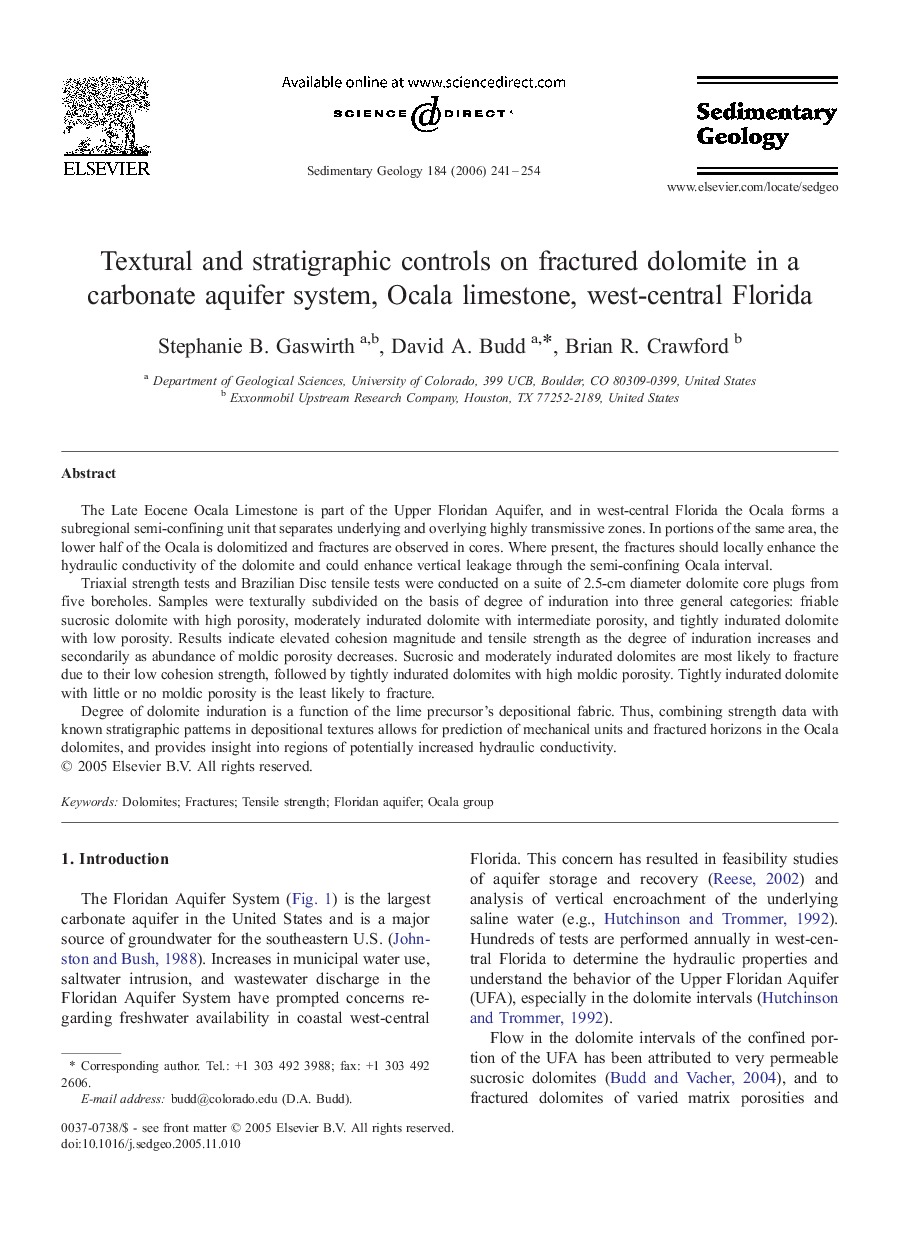| کد مقاله | کد نشریه | سال انتشار | مقاله انگلیسی | نسخه تمام متن |
|---|---|---|---|---|
| 4691087 | 1636191 | 2006 | 14 صفحه PDF | دانلود رایگان |

The Late Eocene Ocala Limestone is part of the Upper Floridan Aquifer, and in west-central Florida the Ocala forms a subregional semi-confining unit that separates underlying and overlying highly transmissive zones. In portions of the same area, the lower half of the Ocala is dolomitized and fractures are observed in cores. Where present, the fractures should locally enhance the hydraulic conductivity of the dolomite and could enhance vertical leakage through the semi-confining Ocala interval.Triaxial strength tests and Brazilian Disc tensile tests were conducted on a suite of 2.5-cm diameter dolomite core plugs from five boreholes. Samples were texturally subdivided on the basis of degree of induration into three general categories: friable sucrosic dolomite with high porosity, moderately indurated dolomite with intermediate porosity, and tightly indurated dolomite with low porosity. Results indicate elevated cohesion magnitude and tensile strength as the degree of induration increases and secondarily as abundance of moldic porosity decreases. Sucrosic and moderately indurated dolomites are most likely to fracture due to their low cohesion strength, followed by tightly indurated dolomites with high moldic porosity. Tightly indurated dolomite with little or no moldic porosity is the least likely to fracture.Degree of dolomite induration is a function of the lime precursor's depositional fabric. Thus, combining strength data with known stratigraphic patterns in depositional textures allows for prediction of mechanical units and fractured horizons in the Ocala dolomites, and provides insight into regions of potentially increased hydraulic conductivity.
Journal: Sedimentary Geology - Volume 184, Issues 3–4, 15 February 2006, Pages 241–254